The world of pre-owned sewing machines. Whether you’re an avid seamstress or a budding enthusiast, the prospect of acquiring a used sewing machine holds great potential.
This guide offers indispensable insights into the art of selecting the perfect machine for your crafting needs. From reputable brands to crucial inspection techniques, we’ll navigate you through the process, ensuring you make an informed decision.
Discover the red flags to watch for, negotiate prices with confidence, and uncover the timeless craftsmanship of vintage models. Join us on this journey, as we unravel the secrets to finding a dependable, cherished companion for your sewing endeavors.
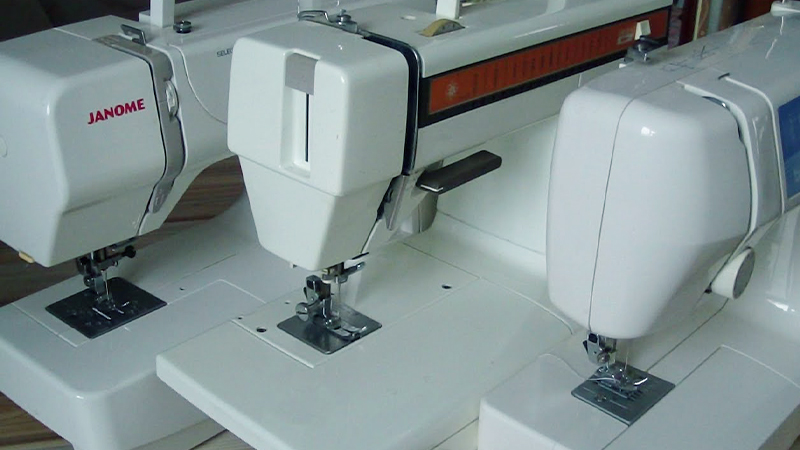
Tips for Buying a Used Sewing Machine
Buying a used sewing machine can be a great way to save money while still getting a quality machine. However, it’s important to approach the purchase with some caution to ensure you’re getting a machine that’s in good working condition.
Here are some tips for buying a used sewing machine:
Research the Brand and Model
Before making a purchase, it’s important to thoroughly research the brand and model of the sewing machine you’re interested in. Look for online reviews, visit sewing forums, and join sewing communities to gather information.
Pay attention to user experiences, feedback on performance, durability, and any common issues associated with that particular model.
Inspect for Physical Damage
Take your time to visually inspect the sewing machine. Run your hands over its surface, feeling for any irregularities.
Look for signs of cracks, dents, or bent metal parts. These physical damages can affect the machine’s functionality and may require costly repairs.
Check Stitch Quality
Testing the machine’s stitch quality is crucial. Use a variety of fabric scraps to sew different types of stitches.
Evaluate the quality of the stitches by examining their tension, spacing, and overall appearance. Ensure that the stitches are consistent and free from skipped stitches.
Test Different Stitches
Experiment with different stitch settings and patterns. This step helps you verify that all the machine’s features and functions are working correctly. Check for any irregularities, such as skipped stitches, uneven tension, or unexpected noises.
Verify Tension Settings
Adjust the tension settings while sewing on different fabrics. The tension should change smoothly, and the stitches should remain consistent.
Difficulty in adjusting tension or erratic stitch quality may be a cause for concern and could indicate an underlying issue.
Inspect the Bobbin Case and Hook
Remove the bobbin case and examine it closely. Check for any signs of wear, rough edges, or debris.
Inspect the hook for smooth movement and ensure it’s in good condition without any visible damage. The bobbin case and hook are critical components for proper stitch formation.
Examine the Needle Plate
Take off the needle plate and inspect it closely. Look for scratches, dents, or signs of wear.
Ensure that the needle hole is smooth and free from any burrs that might affect fabric feeding. A smooth needle plate is essential for smooth sewing.
Check the Motor and Belt
Turn on the machine and listen for any unusual noises or vibrations coming from the motor. Inspect the belt for signs of fraying, cracking, or misalignment.
A well-maintained motor and belt are crucial for smooth operation, as any issues here can lead to uneven stitching or machine malfunctions.
Look for Rust or Corrosion
Pay close attention to metal parts, especially in areas that are exposed to moisture. Surface rust or corrosion can indicate improper storage or neglect. It’s essential to address any rust issues promptly to prevent further damage.
Ask About Maintenance History
Inquire about any routine maintenance or repairs the machine has undergone. A machine with a documented maintenance history is likely to have fewer underlying issues and will likely perform better in the long run.
Check for Accessories
In addition to the basic components, look for extra accessories like additional presser feet, bobbins, or specialty attachments. These can be valuable additions and may save you money in the long term.
Test the Foot Pedal and Power Cord
Ensure the foot pedal is responsive and smooth in operation. Check the power cord for any exposed wires, fraying, or damage.
Test them to make sure they consistently provide power to the machine. A malfunctioning foot pedal or power cord can disrupt your sewing experience.
Research Replacement Parts Availability
Look up the availability of replacement parts for the specific make and model of the sewing machine. A machine with easily accessible replacement parts will be more convenient to maintain over time.
Negotiate the Price
Based on your observations and any identified issues, consider negotiating the price with the seller. Be fair and reasonable, taking into account any potential costs for repairs or missing accessories.
Get a Demonstration
Ask the seller for a thorough demonstration of the machine’s features and functions.
Observe how smoothly it operates and pay attention to any potential quirks or issues that may arise during the demonstration.
This hands-on experience can provide valuable insights into the machine’s condition and performance.
How Can You Check the Condition of a Used Sewing Machine?
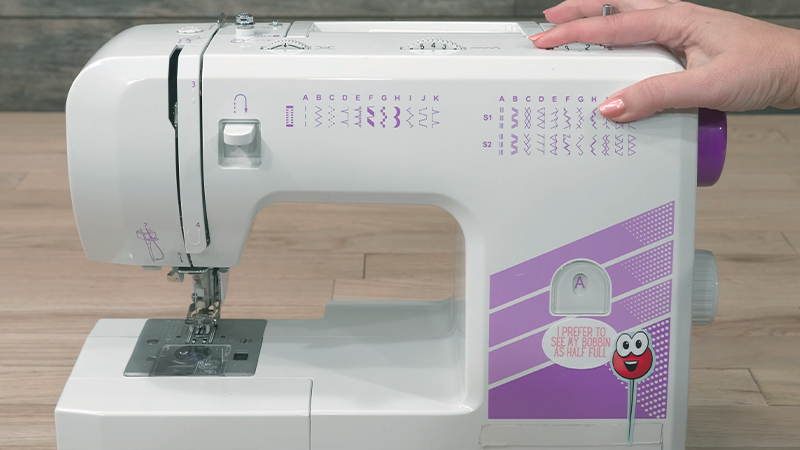
Checking the condition of a used sewing machine is crucial to ensure that it functions properly and meets your needs.
Here’s a step-by-step guide on how to do it:
Visual Inspection
Begin by conducting a thorough visual examination of the sewing machine. Look for any signs of physical damage, such as cracks, dents, or missing parts. Pay special attention to the needle area, presser foot, and bobbin case.
Test Stitch Quality
When possible, test the machine by sewing a few stitches on a scrap piece of fabric.
Observe the quality of the stitches to ensure they are even and consistent. Check for any loose or skipped stitches, as this may indicate a mechanical issue.
Test Different Stitches
When the machine has multiple stitch options, test each one to make sure they all work properly.
Ensure that the machine can smoothly transition between different stitches without any hitches or irregularities.
Check Tension Settings
Adjust the tension settings while sewing on different types of fabric. This allows you to verify that the tension can be easily adjusted and that the machine maintains proper tension throughout the sewing process.
Inspect Bobbin Case and Hook
Remove the bobbin case and check for any signs of damage, debris, or rough edges.
Make sure the hook is in good condition and moves smoothly. The bobbin case and hook are critical components for proper stitch formation.
Examine the Needle Plate
Take off the needle plate and inspect it closely. Look for scratches, dents, or signs of wear.
Ensure that the needle hole is smooth and free from any burrs that might affect fabric feeding. A smooth needle plate is essential for smooth sewing.
Check the Motor and Belt
Turn on the machine and listen for any unusual noises or vibrations coming from the motor.
Inspect the belt for signs of fraying, cracking, or misalignment. A well-maintained motor and belt are crucial for smooth operation.
Look for Rust or Corrosion
Pay close attention to metal parts, especially in areas that are exposed to moisture. Surface rust or corrosion can indicate improper storage or neglect. It’s essential to address any rust issues promptly to prevent further damage.
Ask About Maintenance History
Inquire about any routine maintenance or repairs the machine has undergone. A machine with a documented maintenance history is likely to have fewer underlying issues and will likely perform better in the long run.
Inspect Accessories
Verify if the machine comes with any additional accessories, such as extra presser feet, bobbins, or specialty attachments. These can add value to the purchase.
Test the Foot Pedal and Power Cord
Ensure the foot pedal is responsive and that the power cord is in good condition. Test them to make sure they provide consistent power to the machine.
Research Replacement Parts Availability
Look into the availability of replacement parts for the specific make and model of the sewing machine. This is important in case you need to replace any components in the future.
Negotiate the Price
Based on your observations and any identified issues, consider negotiating the price with the seller. Be fair and reasonable, taking into account any potential costs for repairs or missing accessories.
Where Can You Find a Used Sewing Machine?
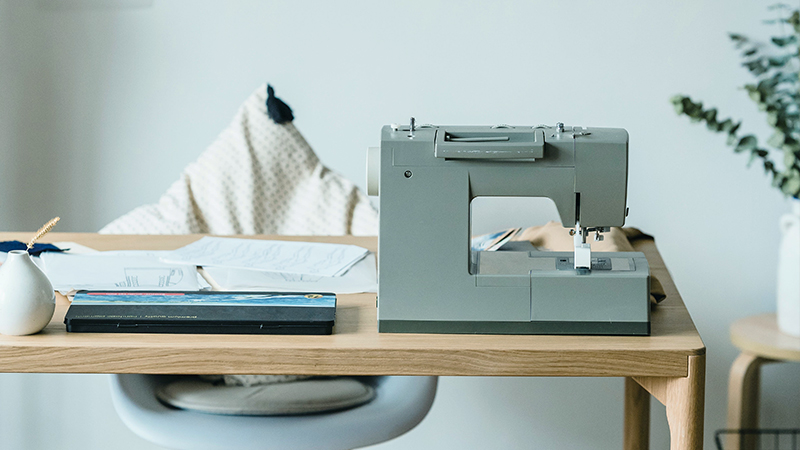
When looking to acquire a used sewing machine, there are various avenues you can explore to find one that suits your needs and budget.
Here are some common places where you can find a used sewing machine:
Online Marketplaces
Websites like eBay, Craigslist, and Facebook Marketplace often have listings for used sewing machines. You can browse through a wide range of options, from vintage models to more recent ones. Be sure to communicate with the seller to get all necessary information and arrange a safe transaction.
Local Sewing or Fabric Stores
Some specialty sewing or fabric shops may offer pre-owned sewing machines for sale.
These machines are typically inspected and serviced before being put up for resale, providing you with a reliable option.
Garage Sales and Estate Sales
Garage sales and estate sales can be treasure troves for finding used sewing machines.
Many times, individuals or families will sell sewing machines that are in good condition but are no longer needed. Keep an eye on local listings or community bulletin boards for upcoming sales.
Online Auctions
Websites and other online auction platforms occasionally feature sewing machines among their listings.
These machines may be sourced from various organizations and individuals, so be sure to read the descriptions and condition reports thoroughly.
Classified Ads in Newspapers and Magazines
Some newspapers and craft-related magazines have classified sections where individuals may advertise used sewing machines for sale. This can be a good way to find local options.
Thrift Stores and Secondhand Shops
Thrift stores and secondhand shops sometimes carry sewing machines. While the selection may vary, you might come across a gem at a significantly lower price compared to buying a brand-new one.
Sewing Machine Repair Shops
Some sewing machine repair shops may have a selection of refurbished or used machines available for purchase. These machines are often serviced and inspected to ensure they are in good working order.
Online Forums and Communities
Sewing forums and online communities often have dedicated sections for members to buy, sell, or trade sewing machines and equipment. Engaging with these communities can lead you to individuals looking to part with their machines.
Sewing Machine Dealerships
Some sewing machine dealerships offer trade-in programs, where customers can exchange their old machines for newer models.
These pre-owned machines are then resold at a lower price after being inspected and serviced.
Word of Mouth
Don’t underestimate the power of asking around within your social circles. Friends, family, or colleagues might know someone looking to sell a sewing machine or may have one themselves that they’re willing to part with.
Benefits of Buying a Used Sewing Machine
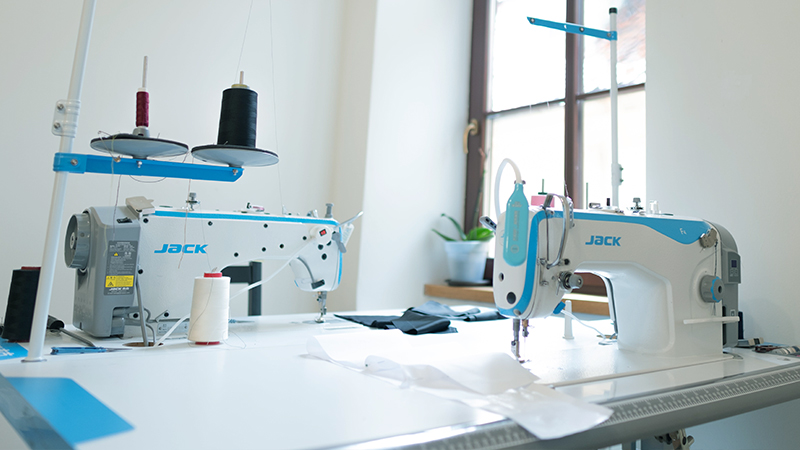
When it comes to investing in a sewing machine, there’s a wide array of options available, including brand-new models and their used counterparts.
While purchasing a new machine can be tempting, there are several compelling reasons to consider buying a used sewing machine.
Here are some notable benefits:
Cost-Efficiency
Opting for a used sewing machine can significantly reduce the initial investment.
Second-hand machines are often priced much lower than their brand-new counterparts, making them an attractive option for those on a budget or beginners looking to explore sewing without a substantial financial commitment.
Quality Craftsmanship
Older sewing machines, particularly those from reputable brands, were often built with robust materials and precise engineering.
This can translate to a sturdier and more durable machine compared to some of the more lightweight, modern models. Many vintage machines are renowned for their exceptional craftsmanship and longevity.
Access to Vintage and Specialty Models
The world of sewing machines boasts a rich history, with various vintage and specialty models offering unique features and capabilities.
By purchasing a used machine, you may gain access to models that are no longer in production, allowing you to explore a broader range of sewing techniques and styles.
Proven Performance
Older sewing machines that have stood the test of time are a testament to their reliability and performance.
They may have decades of sewing experience under their belts, demonstrating their ability to consistently deliver high-quality stitches and reliable operation.
Simplified Mechanics
Some vintage sewing machines are known for their straightforward mechanical design.
This simplicity can be advantageous for those who prefer a more hands-on approach to sewing and want to have a better understanding of how their machine functions.
Availability of Spare Parts
Established brands often have a readily available supply of spare parts, even for older models.
This means that if a component needs replacement or repair, sourcing the necessary parts is usually more accessible for a used sewing machine compared to some newer, specialized models.
Environmentally-Friendly Choice
Choosing a used sewing machine is an eco-conscious decision. By extending the lifespan of a pre-owned machine, you’re contributing to the reduction of waste and the conservation of resources that would be used in the production of a new one.
Ideal for Learners and Experimentation
For those who are just starting out on their sewing journey, a used machine can be an excellent choice.
It provides an opportunity to learn the basics without the pressure of working with a high-end, feature-rich model. This allows beginners to focus on honing their skills before upgrading to a more advanced machine.
Common Red Flags When Buying a Used Sewing Machine
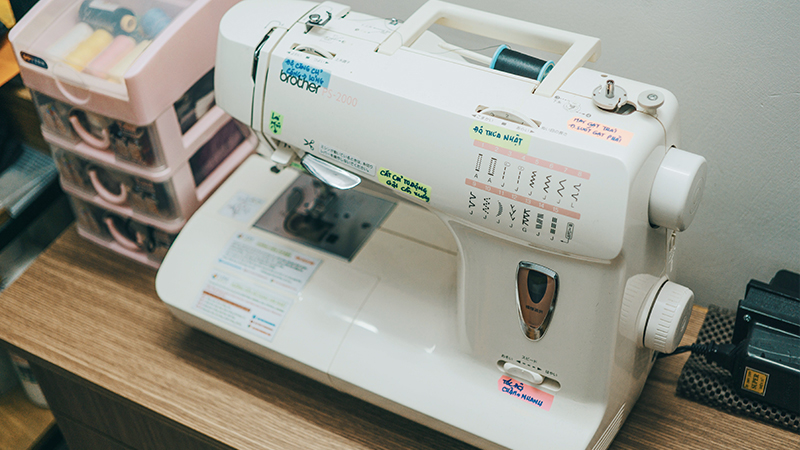
When buying a used sewing machine, it’s important to be vigilant for potential issues.
Here are some common red flags to watch out for:
Visible Physical Damage
Examine the sewing machine closely for any visible physical damage. Look for cracks in the machine’s body, dents in the casing, or any parts that appear bent or misaligned.
Such damage may indicate rough handling or accidents that could have affected the machine’s internal components and performance.
Rust or Corrosion
Inspect metal parts, particularly in areas exposed to moisture, for signs of rust or corrosion. Rust on critical components can be a red flag, suggesting that the machine may have been stored in a damp or humid environment, potentially causing internal damage.
Unusual Noises or Vibrations
When testing the sewing machine, pay attention to the sounds it makes and any vibrations felt while it’s running.
Unusual noises like grinding, clunking, or rattling, as well as excessive vibrations, could be indicators of underlying mechanical issues that may require repairs.
Inconsistent Stitching
Test the machine by sewing on different fabrics and examine the quality of the stitches.
Inconsistent stitches, including those that are uneven, loose, or skipped, can point to problems with the machine’s tension, timing, or bobbin mechanisms, which may require professional attention.
Difficulty Adjusting Tension
Try adjusting the tension settings while sewing. If the tension adjustment is stiff, erratic, or unresponsive, it may indicate internal issues with the machine’s tensioning system, making it challenging to achieve proper stitch quality.
Limited Stitch Options
If the sewing machine is advertised as having multiple stitch options but can only perform basic straight stitches, it’s essential to investigate further. This discrepancy could signal a malfunction in the machine’s stitch selection mechanism.
Missing Accessories or Parts
Check if essential accessories and parts are included with the machine, such as presser feet, bobbins, or the power cord. Their absence could affect your ability to use the machine effectively, and replacements may add to the overall cost.
Bobbin Case Issues
Inspect the bobbin case for any rough or damaged edges. Difficulty in inserting or removing the bobbin case may lead to stitching problems, and addressing such issues can be costly.
Visible Wear and Tear
Examine components like the needle plate and feed dogs for excessive wear, scratches, or signs of damage. Considerable wear and tear may suggest heavy use or a lack of regular maintenance.
Non-Functioning Mechanisms
Test the machine’s various mechanisms, such as levers, dials, and buttons. If any of these are stuck, jammed, or don’t move smoothly, it could indicate mechanical issues that may require repairs.
FAQs
How can I assess the condition of a used sewing machine?
To assess a used sewing machine, visually inspect it for any physical damage, test its stitch quality, check for the smooth operation of different stitches, and examine critical components like the bobbin case and hook.
What should I consider when negotiating the price of a used sewing machine?
When negotiating, take into account any identified issues, missing accessories, and the overall condition of the machine.
Are certain sewing machine brands better for buying used?
Yes, certain brands like Singer, Brother, Janome, Bernina, and Pfaff are known for producing reliable machines that hold up well over time.
How can I ensure replacement parts are available for a used sewing machine?
Research the availability of replacement parts for the specific make and model of the sewing machine you’re considering.
Is it a good idea to get a demonstration before buying a used sewing machine?
Yes, if possible, asking for a demonstration can provide valuable insights into the machine’s condition and performance.
To Recap
In the quest for a reliable sewing machine, thorough examination and informed decision-making are paramount.
Inspecting for physical integrity, evaluating stitch quality, and testing various features ensure functionality. Understanding brand reputation and maintenance history adds further assurance.
Vintage models often boast exceptional craftsmanship, while modern machines offer advanced capabilities. Considering personal needs and skill levels aids in selecting the right model.
Online marketplaces, local stores, and specialized shops are viable sources. Negotiation based on observed conditions is a sensible practice.
By adhering to these tips, one can confidently embark on acquiring a pre-owned sewing machine, unlocking a world of creative possibilities without compromising quality.
Leave a Reply